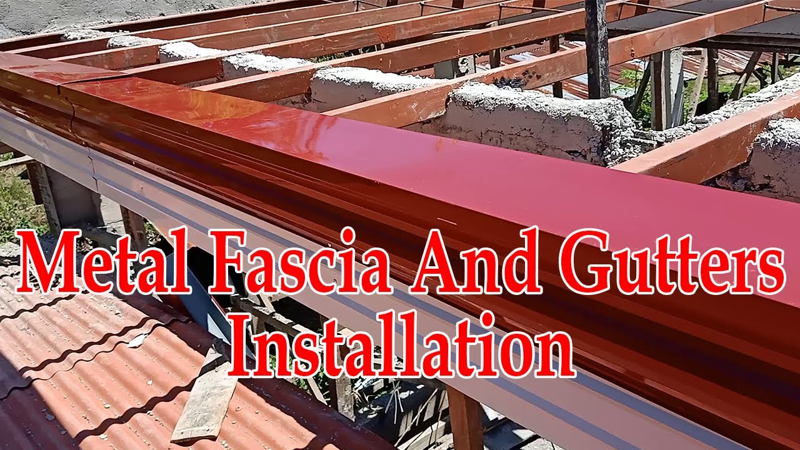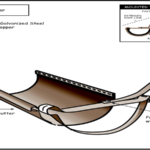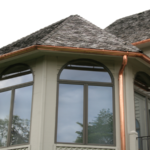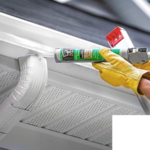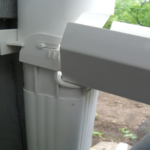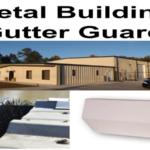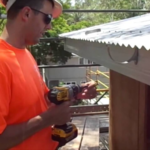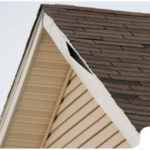You might not think about your gutters very often, but they play a critical role in protecting your home from water damage. improper installation can cause a number of problems, including leaks, water damage to your foundation, and even flooding in your basement.
It’s important to take control of the outcome of your gutter installation project, and that starts with choosing the right contractor. Be sure to do your research and get multiple bids. And don’t be afraid to ask questions – a good contractor should be happy to answer them.
Once you’ve chosen a contractor, there are a few things you can do to help ensure a successful installation. First, make sure the contractor is aware of any underground utilities that could be affected by the work. Second, be sure to clear any debris from your gutters before the contractor arrives. This will help them do their job more efficiently and reduce the risk of damage to your gutters.
Finally, don’t hesitate to call the contractor if you have any questions or concerns during the installation process. By taking these steps, you can help ensure that your gutters are installed correctly – and that your home is protected from water damage.
What is improper gutter placement?
The placement of your gutters is extremely important for the proper drainage of rainwater. If your gutters are placed too low, rainwater can pool around your foundation and cause serious damage. If your gutters are placed too high, rainwater can wash away your landscaping.
What are some common mistakes that people make when installing gutters?
One common mistake is not taking into account the slope of your roof. Without the proper slope, rainwater will not flow properly into the gutters and will instead pool on your roof or spill over the sides of the gutters.
Another mistake is not properly securing the gutters. If the gutters are not properly secured, they can come loose during a storm and cause serious damage to your home.
Finally, many people forget to clean their gutters on a regular basis. This can lead to a build-up of leaves and debris, which can clog the gutters and cause water to back up and overflow.
Can bad gutters cause foundation problems?
- Soil erosion: When water overflows from gutters, it can wash away the soil around your foundation. This can weaken your foundation and make it more susceptible to damage.
- Basement flooding: If water is overflowing from your gutters and onto your basement floor, you’re at risk for basement flooding.
What is the rule of thumb for gutter installation?
There is no definitive answer to this question as it depends on a number of factors, including the type of gutters you are installing, the size and slope of your roof, and the climate in your area. However, as a general rule of thumb, you should install gutters on any roof that is longer than 30 feet, has a pitch of more than 3 inches per foot, or is located in an area with a lot of rainfall or snowfall.
What is a false gutter?
A false gutter is a type of gutter that is not connected to a downspout. False gutters are often used for aesthetic purposes, such as on houses with ornate eaves. However, false gutters can also be functional, such as on a building with a flat roof. In either case, false gutters are not as effective as traditional gutters, since they cannot collect and channel water away from the structure.
What issues can not having gutters cause?
If your home does not have gutters, water can pool on the roof, which can lead to leaks. In addition, water can run down the sides of your home, causing mold, mildew, and wood rot. Gutters also help to keep your landscaping and foundation from eroding.
Should gutters go all the way around a house?
The answer to this question is yes, gutters should go all the way around a house. There are a few reasons for this. First, gutters help to keep water away from the foundation of the house. This is important because if water gets into the foundation, it can cause serious damage to the house. Second, gutters help to keep the siding of the house clean. If water is allowed to run down the side of the house, it can cause the siding to become stained and discolored. Finally, gutters help to protect the landscaping around the house. If water is allowed to run off the roof and onto the ground, it can wash away soil and damage plants.
Should gutters be flush with fascia?
There are a few schools of thought on this one – some say that gutters should be flush with the fascia (the board that runs along the edge of the roof), while others say that there should be a small gap. There are pros and cons to both approaches.
If gutters are flush with the fascia, it can give the home a cleaner, more finished look. Water will also run more smoothly off the edge of the roof and into the gutters. However, if there is any movement in the fascia board, it can cause the gutters to become misaligned or even to come loose.
Leaving a small gap between the fascia and the gutter can help to prevent this from happening, as there is room for the gutter to move slightly without affecting its position. However, some people feel that this creates an unfinished look, as there is a visible gap between the two.
Final Word
Don’t let incorrect gutter installation ruin your home – take control of the outcome by ensuring that your gutters are installed properly. With proper installation, you can protect your home from water damage and keep it looking its best.
